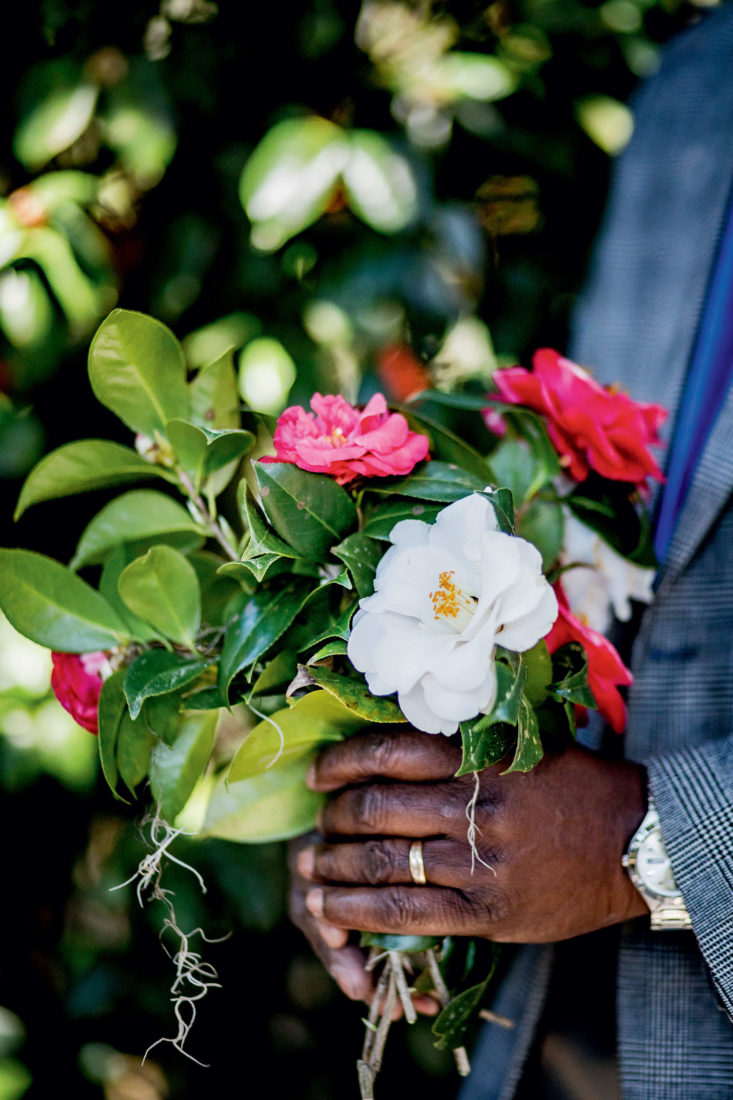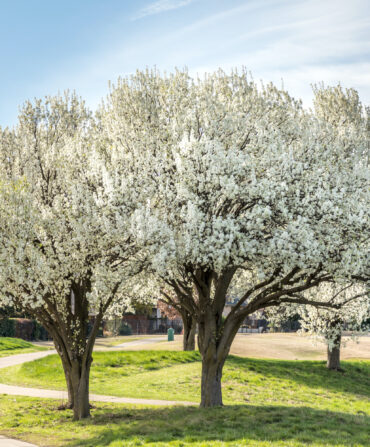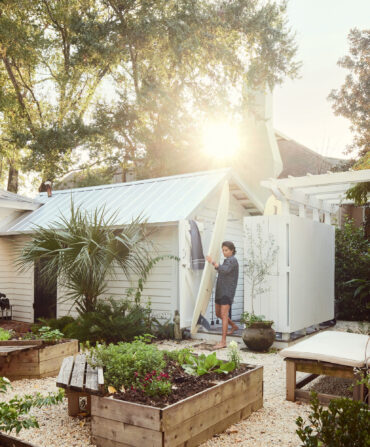Sidney Frazier reaches for the dark green leaves, gently, as if clasping his grandmother’s hand. “This is the Queen of Flowers, our oldest camellia,” he says of the plant, which blooms red with a splash of white. “It’s over two hundred years old.”
Frazier is the vice president of horticulture at Middleton Place, a colonial-era plantation turned house museum along the Ashley River just outside Charleston, South Carolina, where he oversees the oldest landscaped gardens in America. Just as storied, though, are the property’s ten thousand pink, red, and white camellias, cold-tolerant shrubs native to Asia that bloom November through January. Some blossoms are floppy, wavy with petals, others so symmetrical and delicate they almost look like porcelain. One, that Queen of Flowers, is very likely the nation’s oldest camellia.
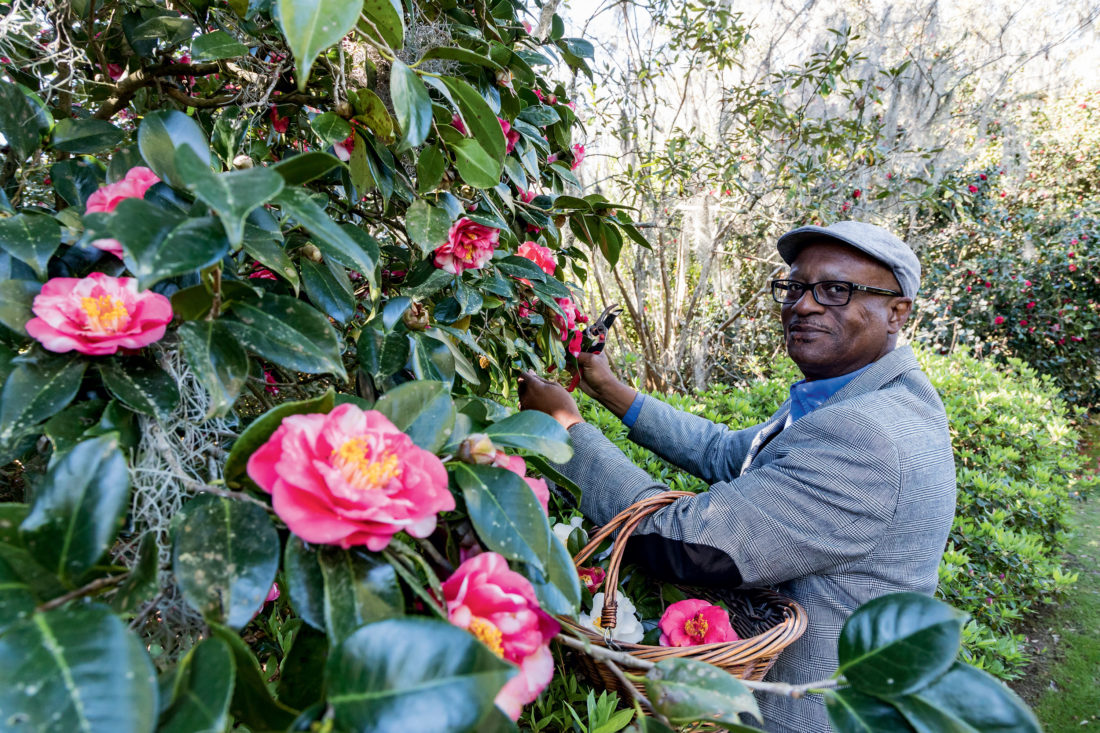
Photo: Peter Frank Edwards
Sidney Frazier pruning Camellia japonica blooms at Middleton Plantation.
Frazier considers himself the guardian of them all—he has tended the flowering shrubs for more than forty years. And although he has planted a handful of camellias over the decades, most are older than him. Walking along one of Middleton’s brick paths, the sixty-one-year-old peers through his glasses, examining his charges like a doctor. “Camellias are not high-maintenance, and they love the environment here,” he says in an easygoing tone that might baffle those who find daunting the prospect of keeping
masses of centuries-old shrubs alive, including rare specimens among the more than one thousand cultivars and species. “I prune for shape and form, letting air flow through the plant so it can breathe. Some camellias grow over the top of a path, so that as they bloom, you walk through a tunnel of flowers.”
As a boy, Frazier discovered plant cycles and patience while growing up on his grandparents’ sharecropped patch of land on nearby James Island. His first sight of Middleton came when he was seventeen and hired for a summer job in 1974. “I saw the terraces and the lakes and the ponds, and it just did something to me,” he says. “I felt a connection. I thought this type of garden only existed in England or Italy, but I never knew this existed in South Carolina, in my backyard.”
Groundskeepers at Middleton admired the teenager’s curiosity, his willingness to get his hands dirty, and how Frazier asked earnest questions when he didn’t understand—“How do you prune azaleas?” “When do we fertilize?” After joining the staff at Middleton full-time in 1978, he furthered his horticultural education at nearby Trident Technical College. Frazier now regularly answers calls from garden clubbers, leads camellia workshops and guided walks at the estate, has appeared as a frequent guest on the local show Making It Grow, and lectures at his alma mater. Today some call these sixty-five acres “Sidney’s garden,” among them Sallie Duell, chairman of Middleton’s board and a cofounder of the Charleston Horticultural Society. “Sidney has been the steward of the garden longer than any other known person, and he’s also the most hands-on of any of its caretakers,” Duell says. “It’s to Sidney’s credit that the queen camellia is still with us, the way he babies it along.”
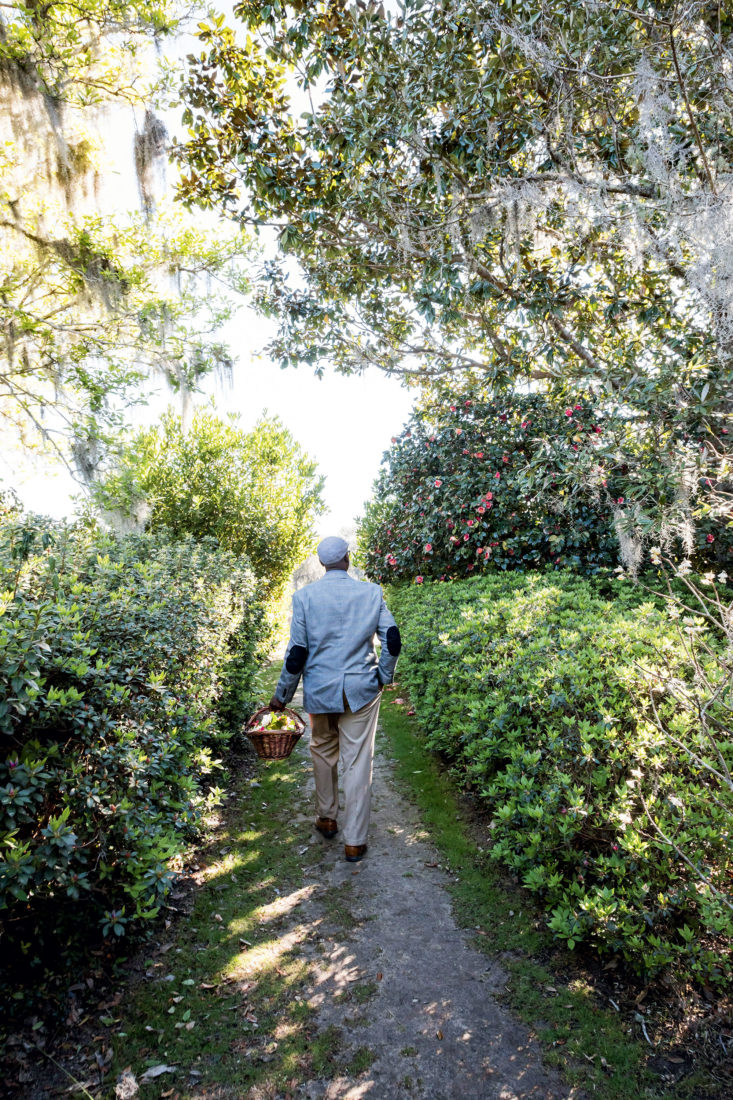
Photo: Peter Frank Edwards
Frazier strolling Middleton’s North Green Walk.
Standing alongside that “Reine des Fleurs,” Frazier takes one of her branches gingerly in his palm. One of the first four camellias rooted here in 1786, this plant was a gift from the French botanist André Michaux to the Middleton family, wealthy indigo and rice planters who made the property their showplace. Only one of those originals—the queen—survived the Civil War and centuries of hurricanes. “After Hugo, we realized we could lose the ancient plants,” Frazier says. “If they’re gone, they’re nowhere else, so they’re really gone.”
In the years after that 1989 storm, Frazier began to attempt to propagate the queen, in an experiment called air layering. The process involves cutting into a piece of a limb, bandaging the wound in wet moss, and wrapping it in plastic wrap. “Then forget about it for six months, come back, and see if that piece is starting to root out,” he says. If the growth has established strong roots, Frazier extracts the new genetically identical piece. “The plant doesn’t even know it’s being removed from the parent,” he says. So far, Frazier has air layered six offspring from the queen and planted the most successful progeny.
“A lot of what I do takes time to be realized,” he says. “If you understand the windows Mother Nature presents to you, you will be rewarded at the right time. If you work against Mother Nature…” He shakes his head. His eyes drift above the queen to a towering magnolia tree. “The camellia is older, but the camellia needs shade,” he says. “The big magnolia, native to here, is her protector.” Just like Frazier.


